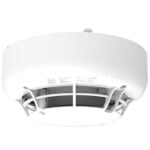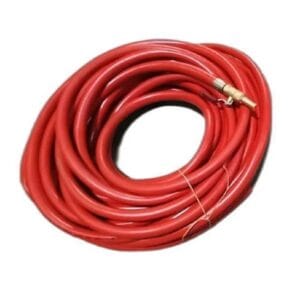Your list is empty, add products to the list to send a request
How to Maintain a Fire Extinguisher? A Complete Fire Safety Maintenance Guide

03
Jun
Fire extinguishers are essential safety tools, but their effectiveness depends on proper maintenance. A neglected extinguisher may not work when you need it most.
This detailed guide explains how to maintain a fire extinguisher, how to check its expiry date, and how to inspect it to ensure it’s in working condition. Regular upkeep can save lives and protect property.
Why Fire Extinguisher Maintenance Matters
Fire extinguishers are not “set-and-forget” devices. Without periodic checks and servicing, extinguishers can lose pressure, become clogged, or expire.
According to the National Fire Protection Association (NFPA), routine maintenance is crucial for performance.
How Should Fire Extinguishers Be Maintained?
Fire extinguisher maintenance involves the following steps:
- Monthly visual inspections
- Annual professional servicing
- Recharging after use or if pressure is low
- Replacement after 5 to 15 years depending on type
- Hydrostatic testing every 5–12 years
These steps ensure the extinguisher works properly during emergencies.
Monthly Fire Extinguisher Inspection Checklist
You should inspect your fire extinguisher every 30 days. Here’s a checklist:
- Is the gauge in the green zone?
- Is the pin intact and secured with a tamper seal?
- Is the label legible and clear?
- Is the body free from rust, dents, or leaks?
- Is the hose/nozzle unobstructed?
- Is it easily accessible and mounted properly?
Document each inspection for compliance and tracking.
How to Check Fire Extinguisher Expiry Date
Most extinguishers have a manufacture date printed on the label or cylinder.
To check expiration:
- Locate the date (e.g., “MFG 2016”)
- Add 5 to 15 years, depending on type (ABC models typically last 10–12 years)
- If expired, replace immediately or consult a technician for evaluation
How to Inspect a Fire Extinguisher Safely
Follow this safe inspection routine:
- Ensure the unit is upright and secure
- Check pressure gauge
- Inspect for damage, rust, and nozzle blockages
- Shake dry chemical models to prevent powder settling
- Verify that instructions are visible and readable
For commercial use, inspections must be documented with date, initials, and condition.
Annual Maintenance and Professional Servicing
Once a year, have a certified fire technician inspect your extinguisher. Annual servicing includes:
- Pressure testing
- Valve and hose checks
- Refilling if discharged
- Tagging for compliance
Failing to meet annual servicing can void warranties and compromise safety.
When to Recharge a Fire Extinguisher
Recharge if:
- It has been discharged, even partially
- The pressure gauge is low
- After five years as a preventive measure (for some types)
Signs Your Fire Extinguisher Needs Attention
- Broken or missing tamper seal
- Gauge not in green
- Obvious rust, cracks, or leaks
- Loose handle or hose
- Unit feels unusually light (may be discharged)
Proper Fire Extinguisher Storage Conditions
Store extinguishers:
- Upright and mounted
- Away from moisture and direct sunlight
- In an accessible and visible location
- Indoors, ideally between 4°C and 49°C
Avoid storage near machinery or vehicles where vibration could affect integrity.
How Long Does a Fire Extinguisher Last?
- Disposable (non-rechargeable): 5–10 years
- Rechargeable: 10–15 years with proper care
The Role of Hydrostatic Testing
Hydrostatic testing checks the integrity of the cylinder under pressure.
Typical schedules:
- ABC dry chemical: Every 12 years
- CO2, Water: Every 5 years
Choosing a Low-Maintenance Fire Extinguisher
If you want long-lasting reliability, choose a quality extinguisher with easy servicing.
The Safety One Fire Extinguisher is a top choice:
- Multi-class coverage (A, B, C fires)
- Rechargeable design
- Durable pressure-stored model
- Ideal for homes, offices, and commercial use
Training Staff or Family on Maintenance Awareness
Teach everyone to:
- Identify the location of each extinguisher
- Perform monthly visual checks
- Recognize signs of expiration or malfunction
Hold periodic fire safety drills to reinforce preparedness.
Conclusion: Regular Maintenance Saves Lives
A fire extinguisher is only as good as its condition. Monthly inspections, annual servicing, and proper storage are essential for safety and compliance.
Choose trusted equipment like the Safety One Fire Extinguisher and commit to a maintenance schedule that ensures it’s always ready to perform.
FAQs
1. How should fire extinguishers be maintained?
They should be inspected monthly, serviced annually by a professional, recharged after use, and replaced when expired. Keep them clean, dry, and mounted properly.
2. How to check fire extinguisher expiry date?
Look for the manufacture date on the label or cylinder. Most units last 5–15 years. Check the pressure gauge and inspection tags to assess condition.
3. How to inspect a fire extinguisher?
Check the pressure gauge, tamper seal, nozzle, body for damage, and mounting. Confirm it’s accessible and the instructions are visible. Shake dry models to prevent powder settling.
Be proactive about fire safety.
Explore the Safety One Fire Extinguisher for dependable performance and easy maintenance.



























